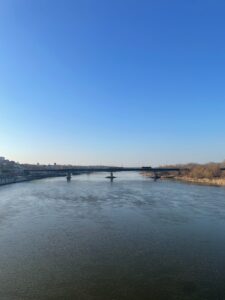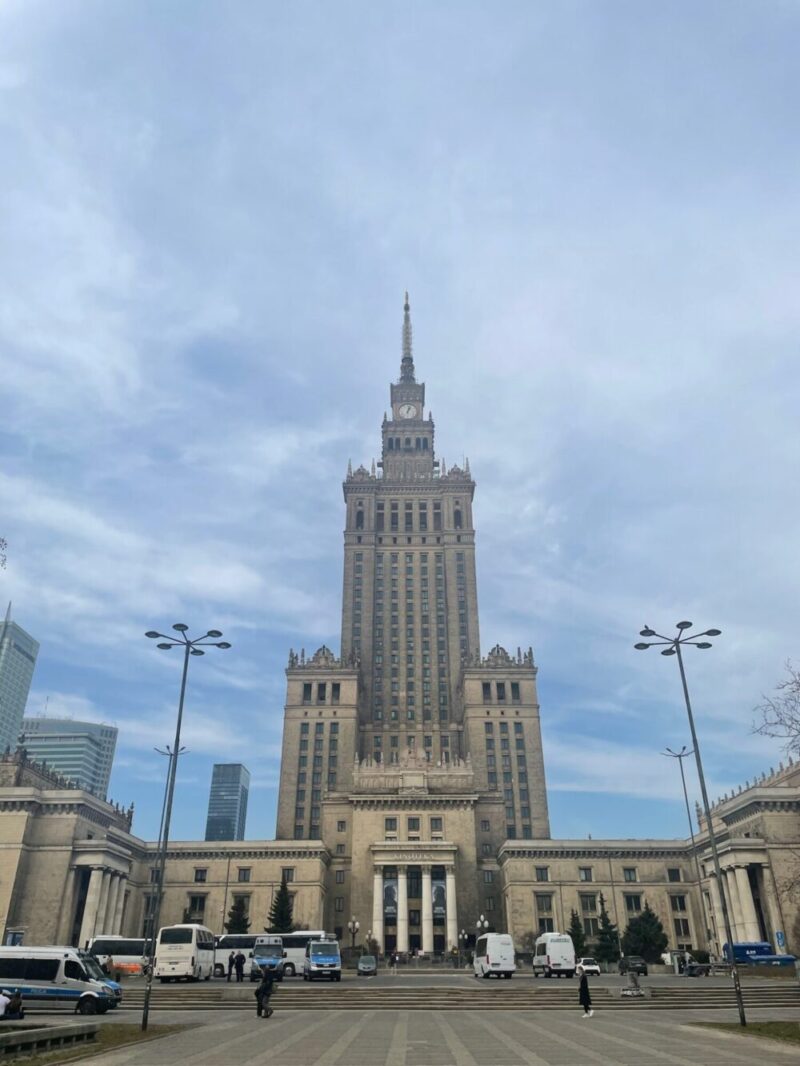Our team member Negar Kazemipourleilabadi traveled to Warsaw in March 2025 for a short but inspiring research trip.

One of the first places she visited was the Library of the University of Warsaw. Its modern architecture combined with a rooftop garden left a strong impression on her— it’s truly the kind of space that invites quiet focus and creativity.
Negar explored the rare books collection at the National Library of Poland, as she is especially interested in materials related to Ottoman manuscripts. She found a few items that may support her ongoing research on the Divan-i Muhibbi. Negar also had a brief but meaningful conversation with a local scholar, Dr. Natalia Krolikowska, who shared insights into manuscript structures and cataloging practices in Polish collections, which was very inspiring and insightful.
She examined a rare, lavishly decorated manuscript from the early period of Ottoman book decoration culture with detailed photos and notes, which can give more insights to our research.
Further, Negar visited the Department of Oriental Studies and Iranian Studies at the University of Warsaw, where she had the opportunity to exchange ideas and research with Dr. Stanisław Jaśkowski. They discussed the culture of gift-giving between Iran and European monarchs and royal families, exploring how these diplomatic gestures shaped historical relationships and cultural exchanges, which is quite an exciting topic.
Also, Negar did some sightseeing: Wandering through the Old Town (Stare Miasto) felt like stepping into a beautifully composed painting: Though much of it was reconstructed after World War II, the meticulous attention to detail in its restoration is truly impressive. The colorful facades, winding cobbled streets, and intimate squares created a vivid sense of place and deep historical continuity.
Another highlight of her trip was the Polish food: She tried traditional Polish dishes like pierogi, żurek (a sour rye soup), and an apple cake that came warm with cream — simple, comforting flavors that stay with you once you tasted it.

A particularly moving experience was the visit of the royal castle Museum of the History of the Polish. The design and storytelling were powerful, and it gives a deeper understanding of Warsaw’s layered past.
Overall, Warsaw left Negar with a mix of feelings — a quiet melancholy rooted in its history, but also warmth and resilience that came through in its people and places.

One of the most memorable parts of the trip was walking along the river and sitting on the bridge overlooking the Vistula. The calm flow of the water, the soft breeze, and the quiet rhythm of the city in the background created a peaceful atmosphere that stayed with her. That simple moment — just sitting there, watching the light shift over the river — was, without a doubt, the best part of her time in Warsaw.
Negar would like to thank the Warsaw library staff for their kind help and support for making her research easy and enjoyable.
